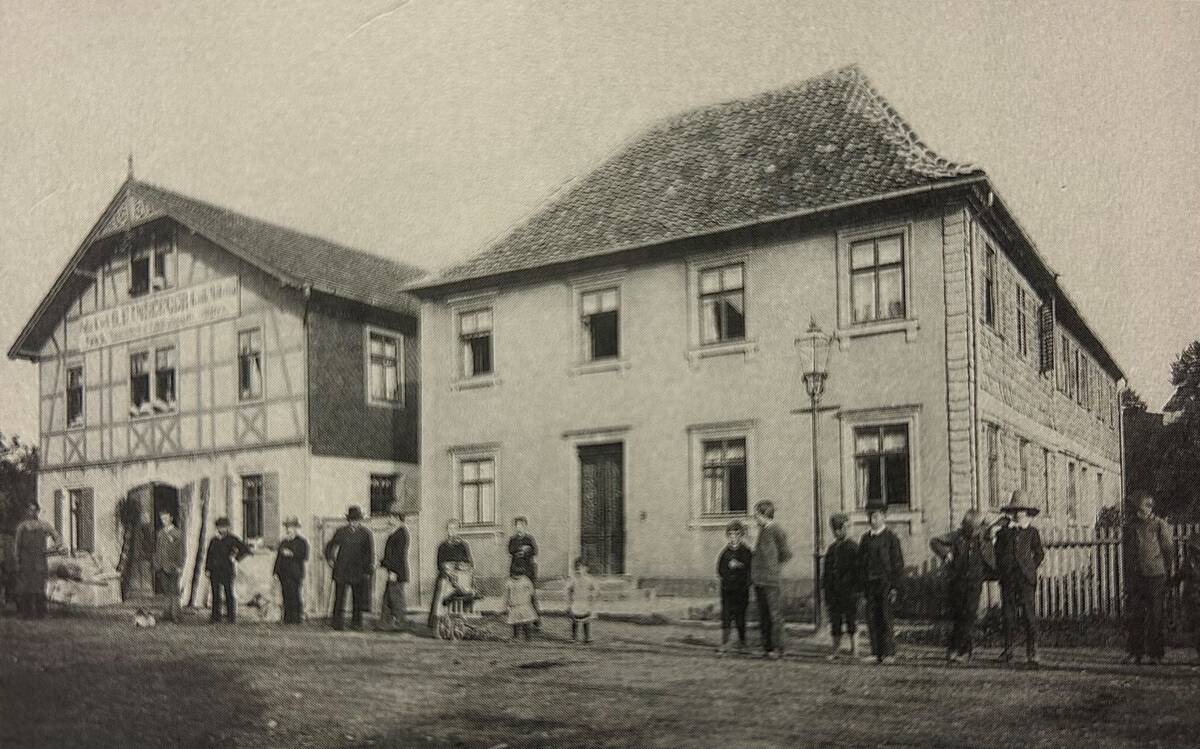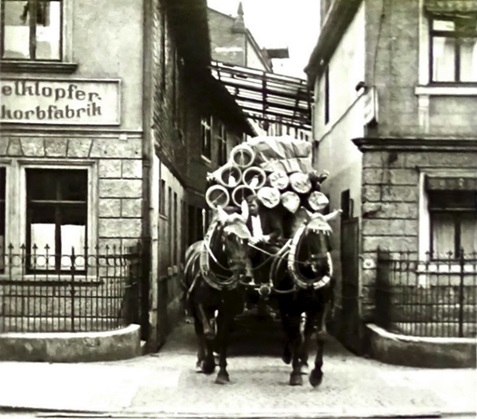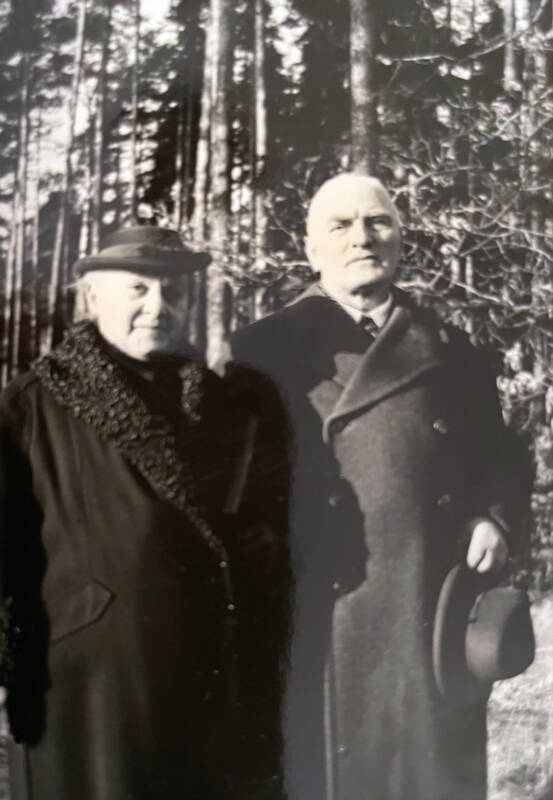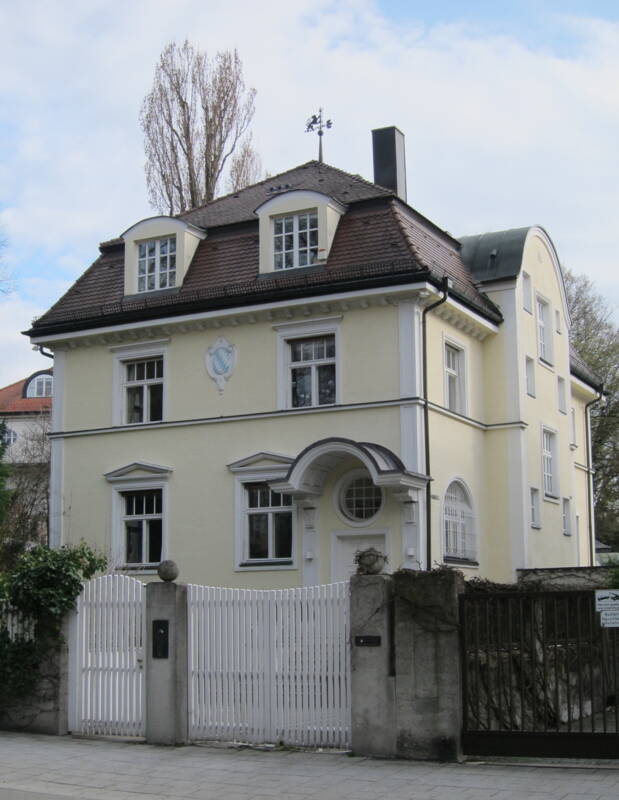Fritz and Emilie Bamberger
Author: Manfred Brösamle-Lambrecht


Fritz Bamberger, born on December 15, 1862 in Mitwitz, married Emilie Kaumheimer, born on March 12, 1870 in Burgkunstadt as daughter of the cattle dealer Isaak Kaumheimer, and his wife Sophie, née Bamberger, on July 8, 1889 in Lichtenfels. They had one son, Alfred, born August 21, 1890 in Lichtenfels.
Photo: Emilie and Fritz Bamberger, about 1930
Development of a major company

The two brothers Philipp and Fritz Bamberger managed the company of their father David Bamberger since 1875. They expanded the family business into the largest European supplier of raw materials for the basket and furniture industry.
Most of the imports came from China, Japan, India, Cuba, France, the Netherlands, Italy and Switzerland. The export was worldwide.
With 300 employees, the David Bamberger company was one of the largest trading houses in Lichtenfels in 1914. After the First World War, the company had to reorient itself. Palm leaf articles gradually went out of fashion. The import of wooden toys became an additional mainstay of the company.
Photo: The Bamberger estate in 1889
 © Stadt Lichtenfels
© Stadt LichtenfelsAfter the death of his brother in 1919, Fritz Bamberger managed the company together with his nephews Otto and Ludwig Bamberger. His son Alfred Bamberger joined the management in the 1930. In his childhood memories, his great-nephew Klaus (later Claude; son of Philipp's son Otto) tells of a stern old man (of course, we don't know how the children teased Fritz):
The store on Bamberger Strasse was a place I frequented quite regularly, albeit for other reasons than my father.
The multiple warehouses, spread over about 6 acres, were a heaven for little boys to play hide and seek. One warehouse, stacked with all types of canes, coco fibers and other elastic materials, served as an ideal trampoline as long as Uncle Fritz was not around.
Uncle Fritz was our terror. We felt we were his prey – he stalked us from one warehouse to another, a flexible bamboo stick in his hand, ready for attack. Alas he was too slow and too old. Invariably we escaped, althaough he did manage to spoil our fun.
Source: Bamberger, Claude: History of a Family – The Bambergers of Mitwitz and Lichtenfels 1770–1993. Self-published, Tenafly, NJ, USA, 1993
Photo: A load of goods leaves the company premises in Bamberger Straße in the direction of the train station. Fritz and Emilie Bamberger's house on the right.
 © Familie
© Familie https://commons.wikimedia.org/wiki/File:Sternwartstr
https://commons.wikimedia.org/wiki/File:Sternwartstr
On July 16, 1937, Fritz Bamberger retired as a partner in the D. Bamberger company.
Photos:
Emilie and Fritz Bamberger on his 75th birthday on 15.12.1937
Munich, Sternwartstrasse 24
The suffering of Fritz and Emilie Bamberger
While many members of the family were able to emigrate to the USA with the help of their uncle Gustave Bamberger in Cleveland, Fritz and his wife Emilie (Millie) probably assumed that the Nazi rulers would not do anything to old people - a fatal mistake. After the "Aryanization" of the company and the apartment building in Bamberger Straße, the couple moved to Munich on August 3, 1939, to escape everyday anti-Semitism in the anonymity of the big city.
 Quelle: https://www.br.de/nachrichten/bayern/berg-am-laim-nazi-lager-fuer-juden-auf-klostergelaende,SoHluck
Quelle: https://www.br.de/nachrichten/bayern/berg-am-laim-nazi-lager-fuer-juden-auf-klostergelaende,SoHluckUntil March 1941 they lived with the Schermer family at Sternwartstr. 24/I ), then in a boarding house at Leopoldstrasse 16/III. At the beginning of December 1941, they were interned in the transit collective camp Berg am Laim on Clemens-August-Strasse. In the summer of 1941, the "Aryanization Office" had confiscated the north wing of the convent of the Sisters of Mercy, which had been newly built in 1936, and set up the "Home for Jews in Berg am Laim" here - as was the trivializing designation of the Nazi authorities. The nuns met the forcibly admitted Jews with compassion and provided them with food. But forced labor and the ever-present threat of deportation wore on the internees. Many felt that their situation was so hopeless that they took their own lives.
Photo: Berg am Laim collection center in Clemens-August-Straße
In February 1942, Fritz and Emilie Bamberger were sent to the "Judenlager Milbertshofen" (Milbertshofen Jewish Camp) on Knorrstrasse - a labor camp consisting of 18 barracks. In January 1942, the rulers had still forced Fritz to make a "voluntary" donation of 5,000 Reichsmark to finance this camp. From there, the two old people were deported to Theresienstadt on June 17, 1942.
The almost 80-year-old Fritz Bamberger survived the ordeal for only a few days. On the transport list his name was crossed out with the pencil note "died 29.06.1942". On 19.09.1942 Emilie Bamberger (transport no. 1145) was deported with 1978 persons with transport Bo to the extermination camp Treblinka and murdered there.

Photo: Milbertshofen Jewish camp

Photo: Transport list Munich - Theresienstadt, June 18, 1942






